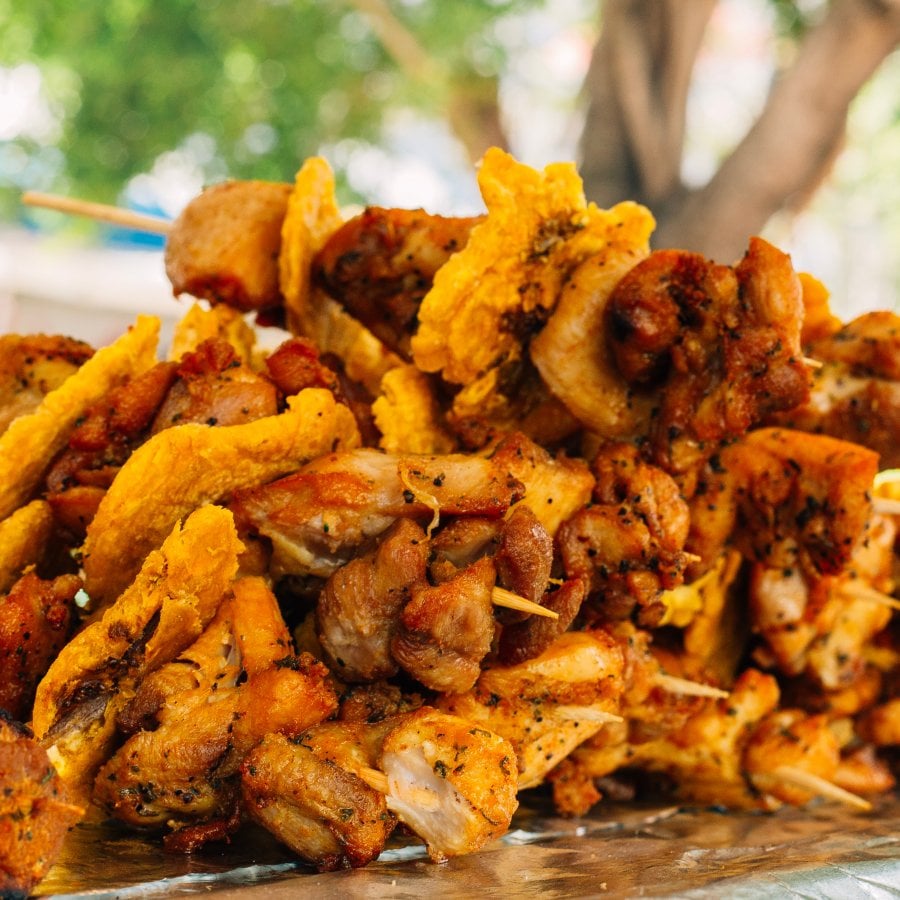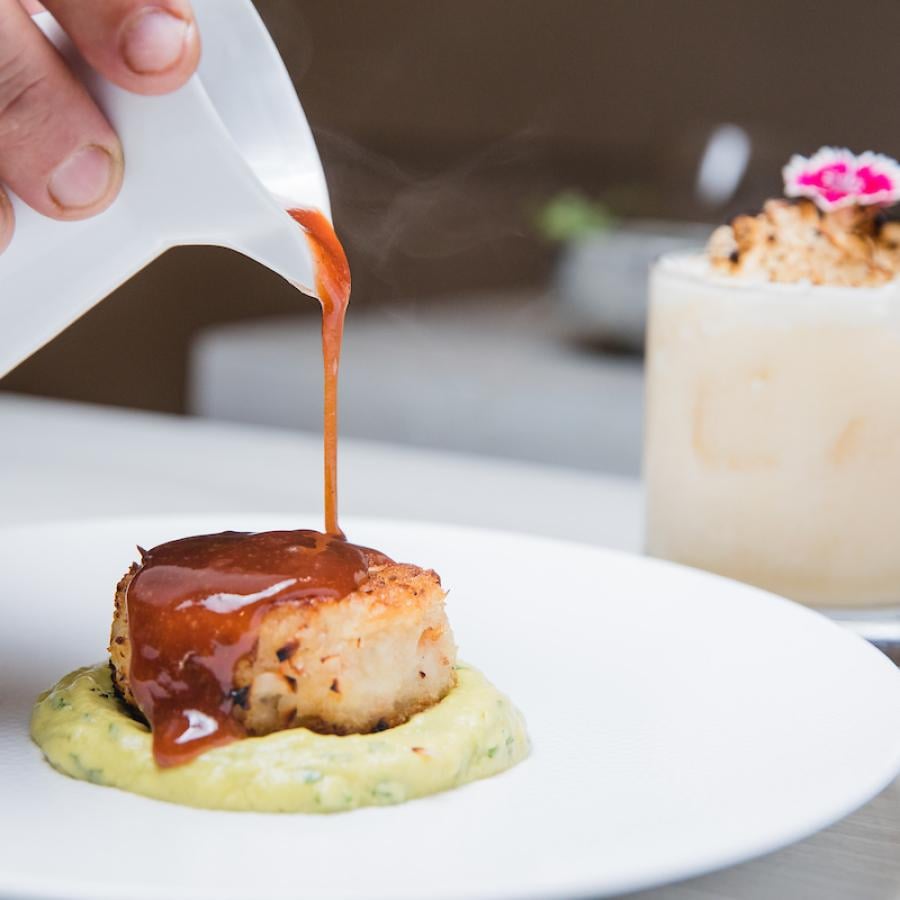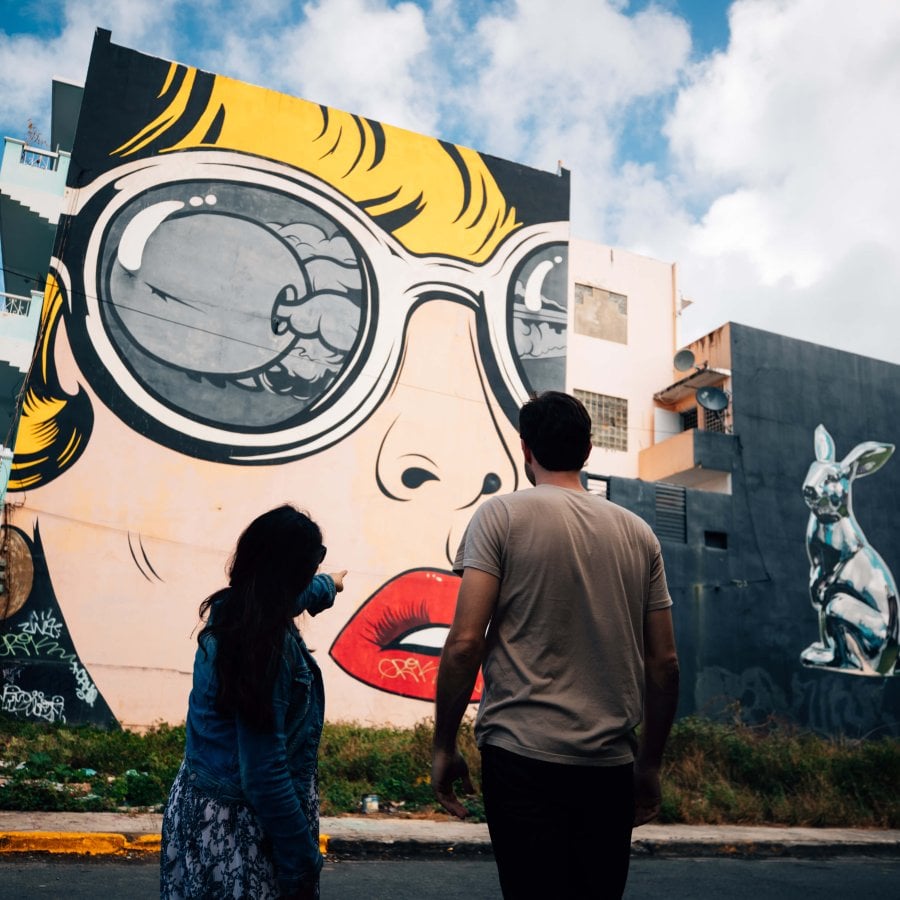Chef Mario Pagán's culinary journey began with the inspiring women in his family, whose kitchens were filled with love and mouthwatering aromas he still remembers. Growing up, he preferred watching his grandmothers and aunts cook instead of playing outside, which sparked a lifelong passion for food. Nowadays, Pagán's culinary style fuses classic French techniques with local ingredients, a concept he refers to as Nueva Mesa Boricua, or New Boricua Table. He is the executive chef of many top restaurants on the Island like Mario Pagán, La Central, and Raya. This approach honors traditional Puerto Rican recipes while elevating them through innovation and locally sourced products.
In this interview, Pagán shares his culinary philosophy, the cultural influences that have shaped his extraordinary creations, and tips to enjoy Puerto Rico's food scene.
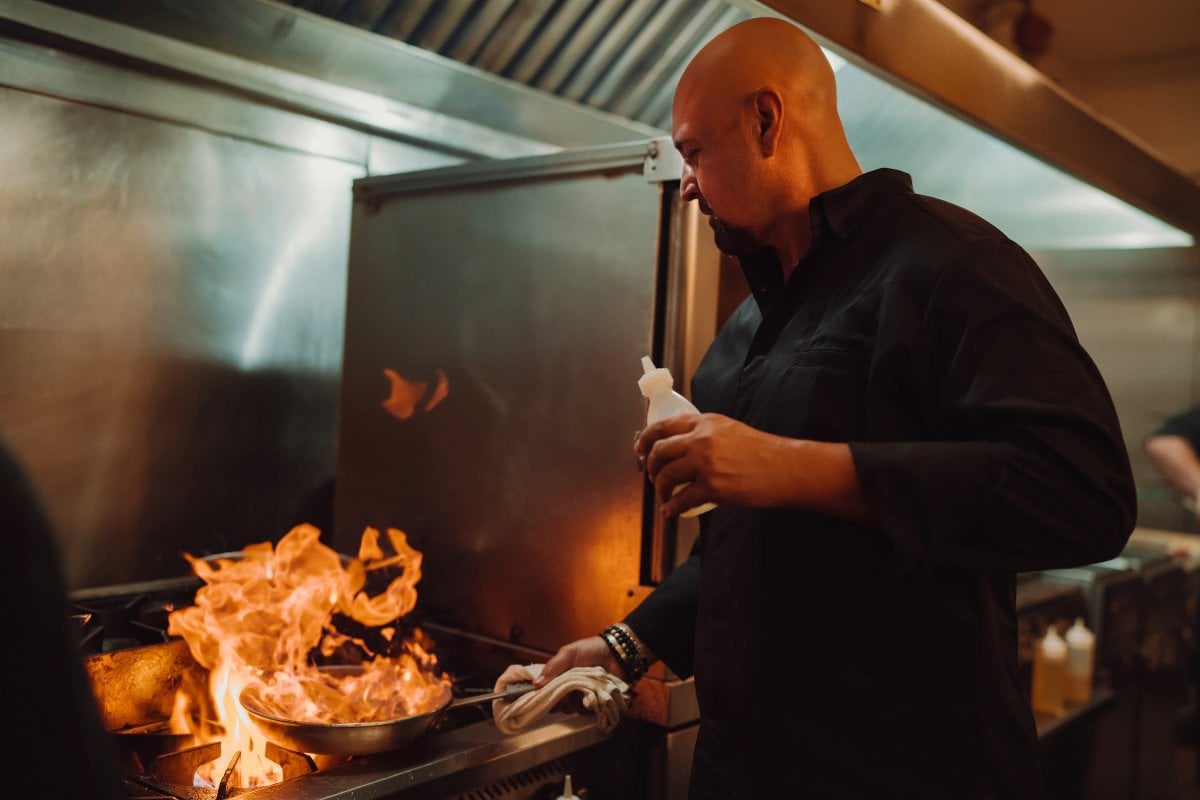
Chef Mario Pagán turning up the heat in the kitchen.
Exploring Culinary Paths: Share your journey of becoming a chef in Puerto Rico.
What sparked your passion for cooking?
My passion for cooking was unconsciously sparked by all the women in my family. My grandmothers, aunts, nanas, my mother, and their friends gathered every day around the kitchen, concocting meals and, of course, gossiping. They taught me to cook with love. Instead of hanging out with my neighborhood friends I preferred to sit on the kitchen counter, watching and tasting everything they did. I still remember the aromas, and it brings me beautiful memories.
How do you define your approach to cooking?
My style of preparation is very French-based, but I add local ingredients to every recipe to transform native dishes that are an important part of our culture. I call it Nueva Mesa Boricua or New Boricua Table.
Can you explain your culinary philosophy?
My philosophy is to stay true to our recipes, promoting and supporting local producers while spreading the wisdom of knowledge in the kitchen with my team.
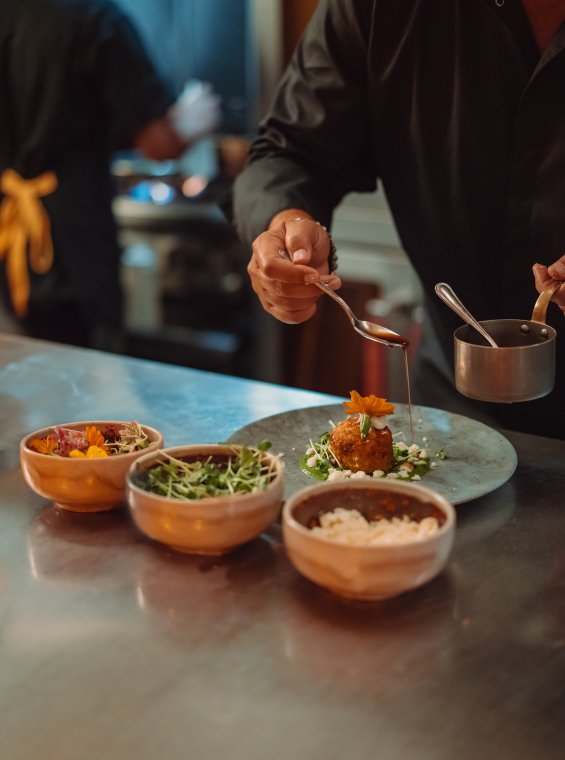
Chef Mario Pagán in Condado serves delicious food, giving classically Puerto Rican dishes a fine-dining spin.
Influence of Puerto Rican Culture
In what ways do Puerto Rico's culture and locales shape your culinary creations?
I'm always learning from my culture in every way possible, adapting classic local recipes with new techniques, and pushing the limits every day.
Must-Try Dishes
What is one signature dish that every visitor should experience at your restaurant or through your culinary services?
My “Pegaíto de Arroz con Pollo.” Essentially, it’s a sofrito-based chicken pilaf. It’s my humble interpretation of the classical dish but with a twist by cracking the rice that’s usually found at the bottom of the cooking pot.
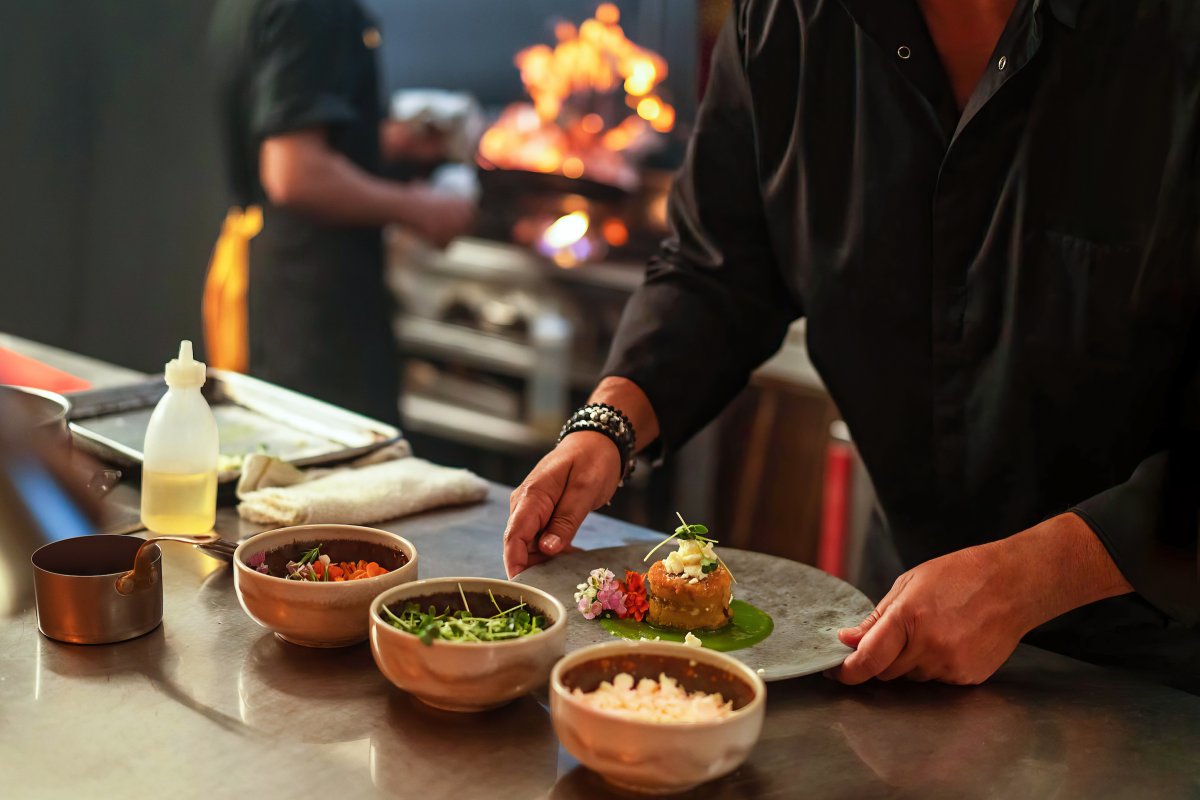
Chef Mario Pagán bringing bold Boricua flavors to life.
Puerto Rican Cuisine Essentials
From your perspective, which dish quintessentially represents Puerto Rican cuisine and why?
The lechón a la vara (slow roasted pork on a spit) done at the mountainside is, for me, our quintessential dish because of its flavor. The creole salt, or sal criolla, is one of the reasons behind it, not to mention the local wood and coals we utilize when roasting it.
Visitor's First Bite
What dish would you recommend to someone new to Puerto Rican cuisine?
Once you arrive at the airport, go straight to Piñones to try our alcapurrias, bacalaítos, and piononos with a local beer. It’s just perfectly fried goodness.
First-Time Diner Tips
Do you have any advice for individuals dining in Puerto Rico for the first time?
We are very diverse when it comes to restaurants, so research depending on the area you're staying, and visit Discover Puerto Rico for more information on the best restaurants around.
Local Dining Favorites
Could you share a few of your favorite local eateries?
El Kiosko del Sabor in Aibonito, La Casita Blanca in San Juan, El Boricua in Piñones, El Rancho de Apa in Guaynabo.

Amazing view of Condado from Old San Juan.
Hometown Pride
Which municipality in Puerto Rico do you hail from? What do you cherish most about your hometown?
I’m from San Juan, and I definitely cherish our people.
Local Exploration Recommendations
Where should visitors go, or what activities should they partake in when visiting your town?
Definitely Condado, Old San Juan, Santurce, Miramar, Distrito T-Mobile and Ocean Park.
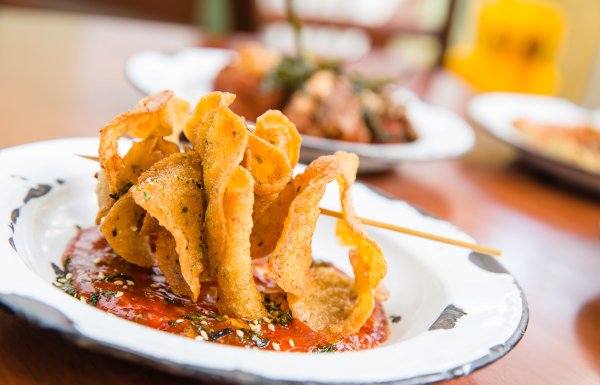
The fresh country air and views of the farm blend with the flavors of Puerto Rican open-fire cooking at Bacoa.
Bacalaíto (codfish fritter)
Learn More
Don't miss a perfect photo-op at an old abandoned tank in Flamenco beach.
Flamenco Beach in Culebra, or any spot around the Island.
Learn More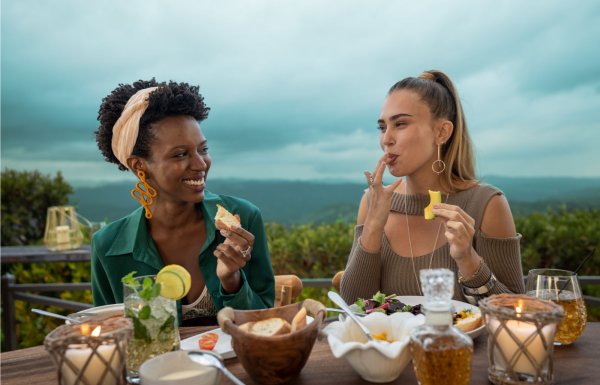
El Rancho de Apa in Guaynabo.
Learn More
Explore the iconic spots in Puerto Rico where your favorite music videos were filmed!
Bad Bunny, of course.
Learn More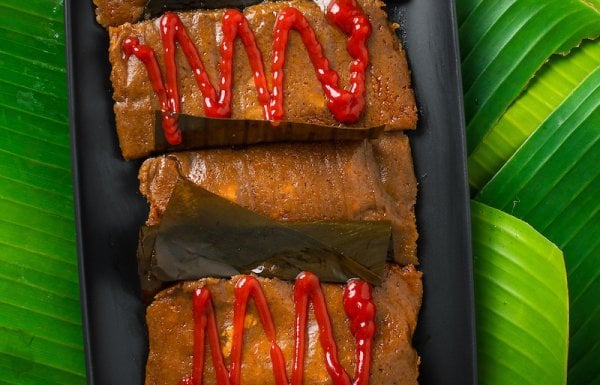
Pasteles are a savory cake made from root vegetables and plantains and filled with delicious meat.
No ketchup! But I love them with hollandaise…
Learn MoreComment Guidelines
We value your thoughts and want to foster a respectful and engaged community. As such, we ask that you adhere to the following guidelines when posting comments
- Please ensure your opinions are expressed respectfully.
- We won’t remove comments that engage in courteous debate but hate speech or any form of profanity will not be tolerated. This also applies to the inappropriate use of emojis or hashtags.
- Do not downvote or dislike a comment simply because you disagree with another person’s views.
- Self-promotion and external links are not allowed and will be removed.
- Avoid sharing private information about yourself or others. Doxing (the act of leaking personal information with harmful intent) is strictly prohibited and will result in a ban.
- Comments that are off-topic will be deleted.
